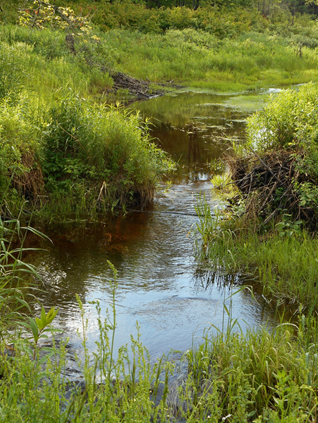Wetland Restoration
 Wetland restoration is a growing field of interest, particularly as a tool to mitigate and adapt to climate change. Wetlands are restored (or created) for many reasons besides compensatory mitigation for direct losses associated with a permit. However, many studies and reports have questioned the “success” of wetland restoration projects and their ability to adequately replace the functions found in reference healthy wetlands. In 2012, David Moreno - Mateos and co-authors published their review of 621 wetland restoration efforts, some over a century old. They found, in general, lower levels of function and environmental benefits relative to existing natural wetlands. Further, many of the issues and problems identified in recent years bear strong parallels to issues and problems articulated a quarter century ago in “Wetland Creation and Restoration: the Status of the Science” published in 1989 (volumes 1 and 2) and later in “Compensating for Wetlands Losses Under the Clean Water Act” in 2001 (Kusler & Kentula, 1989; NRC, 2001).
Wetland restoration is a growing field of interest, particularly as a tool to mitigate and adapt to climate change. Wetlands are restored (or created) for many reasons besides compensatory mitigation for direct losses associated with a permit. However, many studies and reports have questioned the “success” of wetland restoration projects and their ability to adequately replace the functions found in reference healthy wetlands. In 2012, David Moreno - Mateos and co-authors published their review of 621 wetland restoration efforts, some over a century old. They found, in general, lower levels of function and environmental benefits relative to existing natural wetlands. Further, many of the issues and problems identified in recent years bear strong parallels to issues and problems articulated a quarter century ago in “Wetland Creation and Restoration: the Status of the Science” published in 1989 (volumes 1 and 2) and later in “Compensating for Wetlands Losses Under the Clean Water Act” in 2001 (Kusler & Kentula, 1989; NRC, 2001).
To address this issue, NAWM embarked on several projects to help raise the bar on wetland restoration practice and to facilitate better outcomes. In 2013, NAWM completed two publications: Permits for Voluntary Wetland Restoration: A Handbook and Voluntary Restoration of Wetlands: Complex Issues in the Regulation of Restoration Projects. And in 2014, NAWM published a report titled, Ecosystem Service Valuation for Wetland Restoration: What It Is, How To Do It, and Best Practice Recommendations, as a way to improve wetland restoration planning, prioritization and garner more public and policy support. In 2014, NAWM convened an expert wetland restoration work group and spearheaded an “Improving Wetland Restoration Success” webinar series which resulted in 23 recorded and archived webinars that are available for anytime, anywhere learning. And in 2017, NAWM completed its white paper, entitled “Wetland Restoration: Contemporary Issues and Lessons Learned” which shares the findings of the workgroup, webinars and workshops held during the four years spent on this project.
What is “restoration”?
The terms wetland restoration, creation and enhancement are often erroneously used interchangeably, but they are actually very different terms.
The National Research Council (NRC) defines restoration as the "reestablishment of predisturbance aquatic functions and related physical, chemical and biological characteristics.” (NRC, 2012)
In Wetland Creation and Restoration: The Status of the Science, Vol. II (1989), Robin Lewis defines these terms as:
- Restoration is “a putting or bringing back into a former, normal, or unimpaired state or condition.”
- Creation is “the act of bringing into existence.”
- Enhancement is “the state or quality of being enhanced; rise, increase, augmentation.”
Specific Topics
Below you find links to specific wetland restoration topics:
Other Useful Resources
- Compensatory Mitigation Performance: The State of the Science (National Wetlands Newsletter – Morgan and Hough, November-December 2015)
- The Mitigation Rule Retrospective: A Review of the 2008 Regulations Governing Compensatory Mitigation for Losses of Aquatic Resources (US Army Corps of Engineers, 2015)
- U.S. EPA webpages:
- U.S.D.A. webpages:
